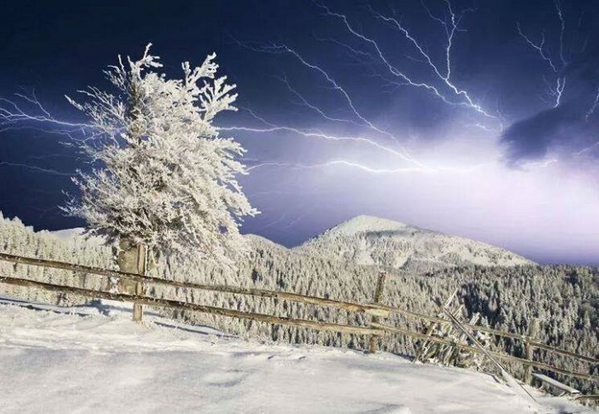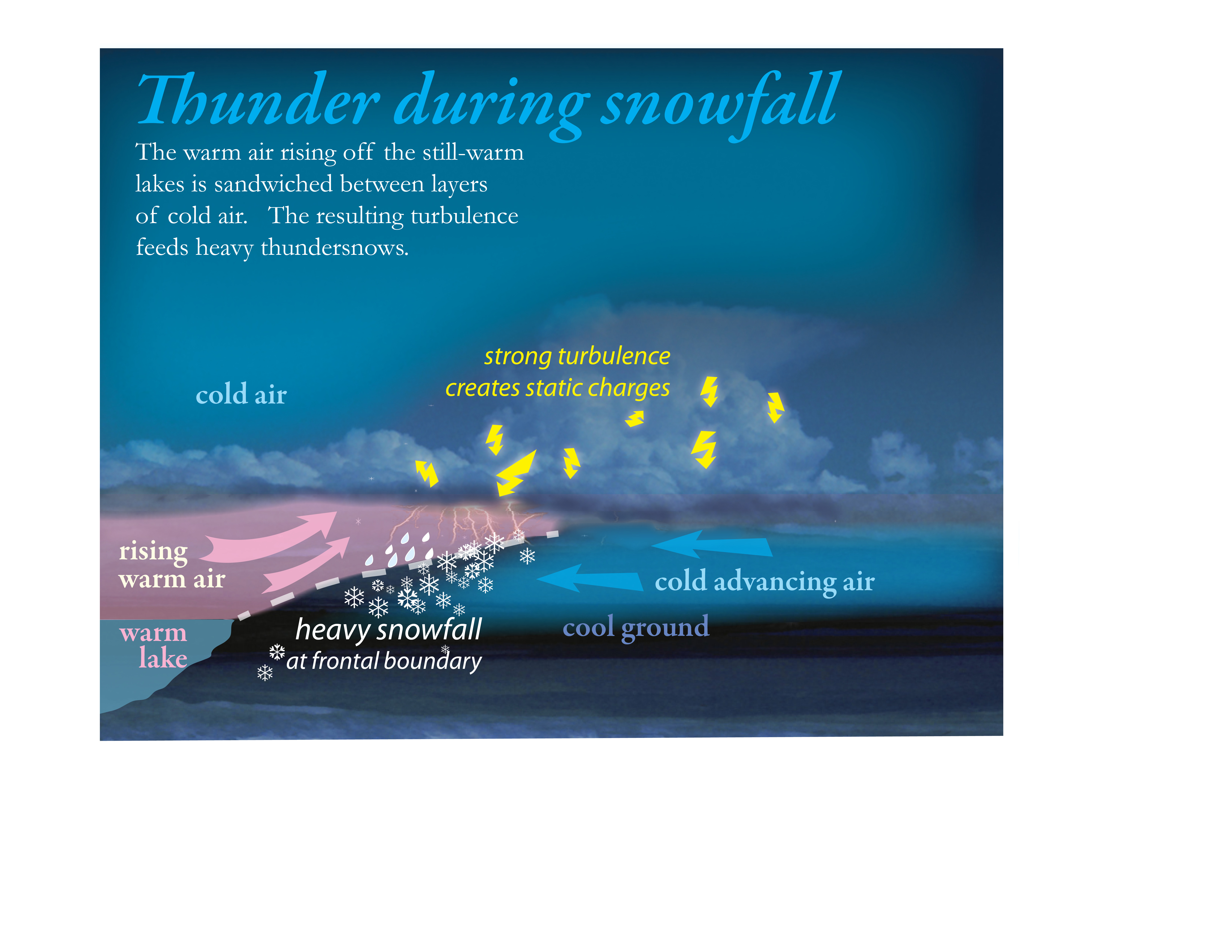The only thing more spectacular than a cold spell bringing freezing temperatures to all 50 states is a cold spell that brings widespread freezes and (Boom! Sizzle!) THUNDERSNOW.
That’s what we saw this November, a massive freeze and the rare phenomenon of thundersnow.

A November surprise. Brrr! Credit: NOAA
On November 17 a massive cold spell brought freezing weather to 49 states. Only Hawaii wasn’t engulfed by the cold and even that sunny state had 31°F weather on the top of Mt. Kea. The massive freeze lingered for days. As noted in my last blog, the abnormally cold polar air mass is suspended just north of us and like the sword of Damocles, it takes very little to encourage it to fall south.
This year, however, the cold is bringing not just cold, misery and snow, but also rare thundersnows—thunderstorms that produce snow instead of rain. High winds, as strong as a tropical storm whip the land. Even worse, this weather event typically brings an additional six inches of snow. Then, when everything melts, a high risk of floods.

Thundersnow or “white lightening” Source: National Interagency Fire Center
Fortunately these types of storms are as rare as they are spectacular, but what causes them? The answer is almost absurd—a hot air sandwich.
In a normal thunderstorm, an updraft of hot surface air streams into the colder air overhead. The moisture in the warm air freezes into ice and sleet, which is heavy enough to fall. When it drops into the warmer air below, it melts back into water and rains. Sometimes, however, the updraft catches it. The clouds become very turbulent, filled with ice, slush and droplets swirling up and down. They bump into each other, creating a static charge. (It is rather like the charge that builds up when you drag your feet on a rug,) The charges accumulate and finally spark into lightning with a thunderous crackle.

Thundersnows are created by hot air sandwiches. The warmer air from the Great Lakes is lifted over the colder, heavier air around their shores. When the rain falls, it enters the cold air and refreezes into snow. Meanwhile, the storm overhear roars on.
This type of weather is not only spectacular, it is rare.
If any of you have been in a thundersnow, what was it like? Share it here, you are among weather-lovers.












